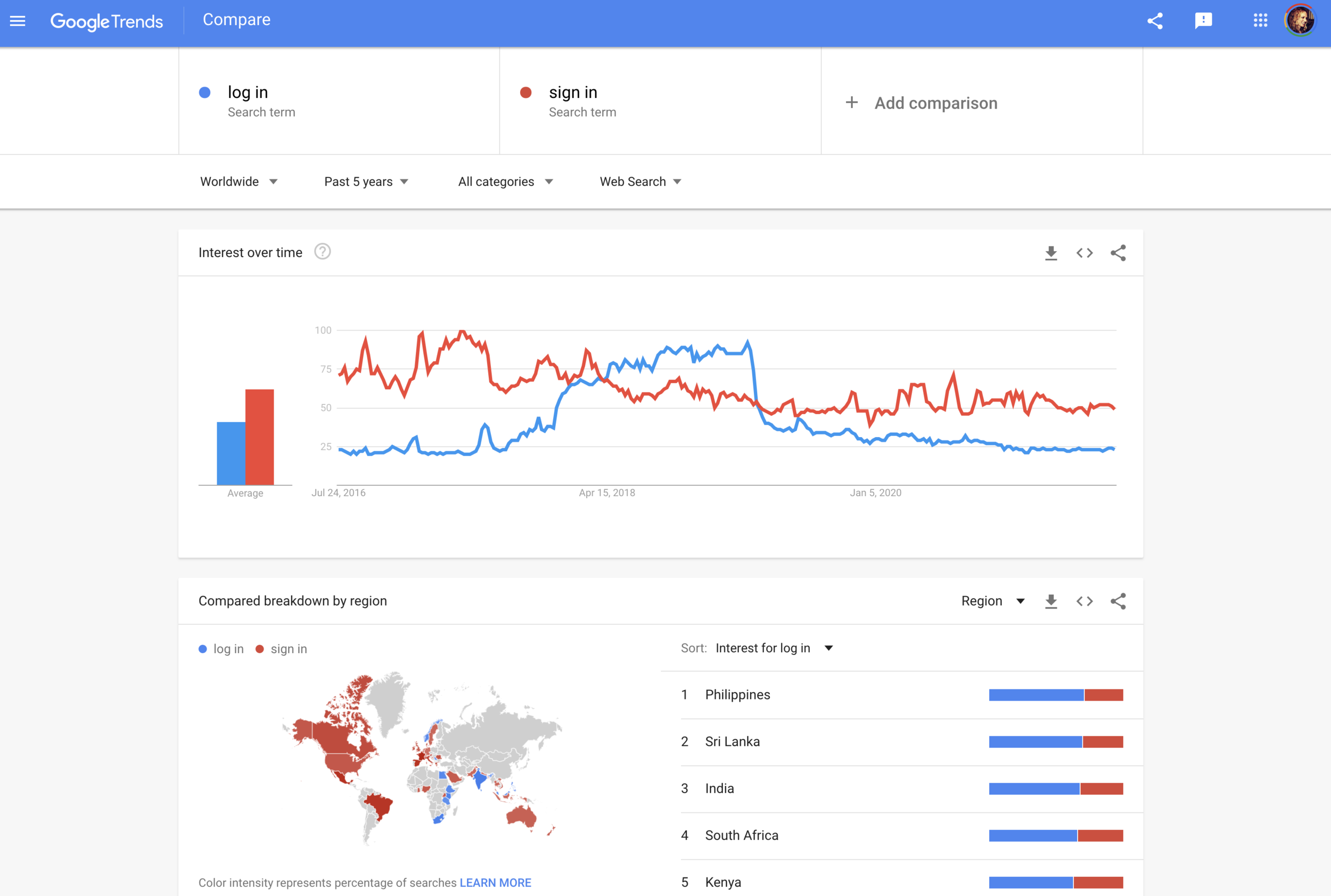Finding the right words with Google Trends
Using Google Trends, you can see the search terms people enter with the greatest frequency for a distinct period of time and for specific regions (especially helpful if your product is designed for a multinational or global audience). Comparing synonymous terms using Google Trends will yield more useful results than comparing disparate terms.
Considerations when using Google Trends
Here are a few thoughts to keep in mind when measuring terms with Google Trends.
Search frequency is a rough measure. It tells you the terms people are searching, but it doesn’t necessarily indicate a preference. It’s best interpreted as a large-scale comparison of popularity.
Spelling matters. For example, if you’re evaluating terms that have different US, Canadian, or UK English spellings, you might see skewed results. If you’re measuring terms
Best for consumer terms. Enterprise users are harder to identify with Google Trends since the search terms are from a broad set of general users. If you were trying to identify the language people use to describe a procedure like drawing blood, for example, Google Trends might help with uncovering patient language, but probably wouldn’t be helpful with the language used by nurses, doctors, or phlebotomists.
- UX Writer’s Collective

